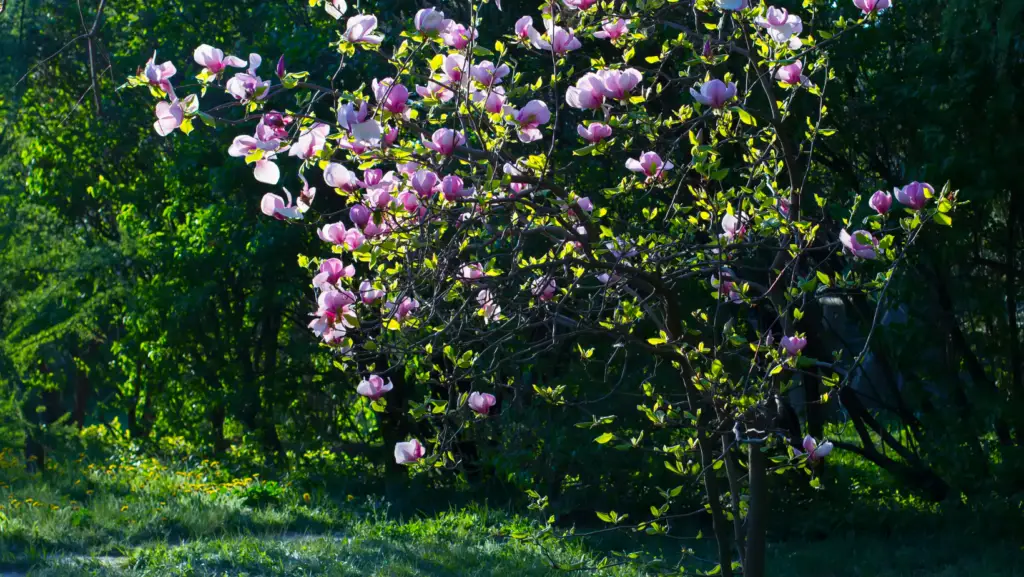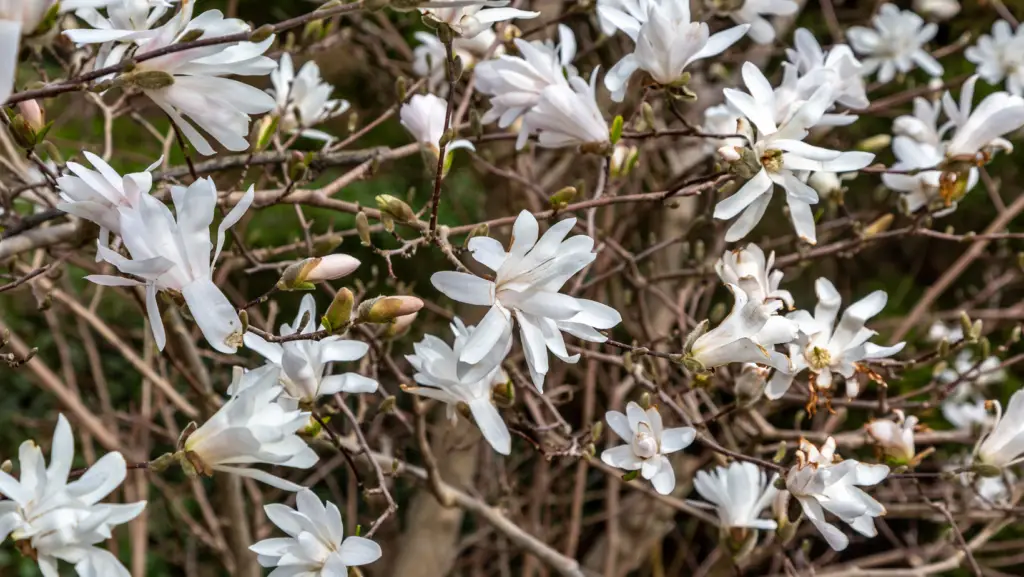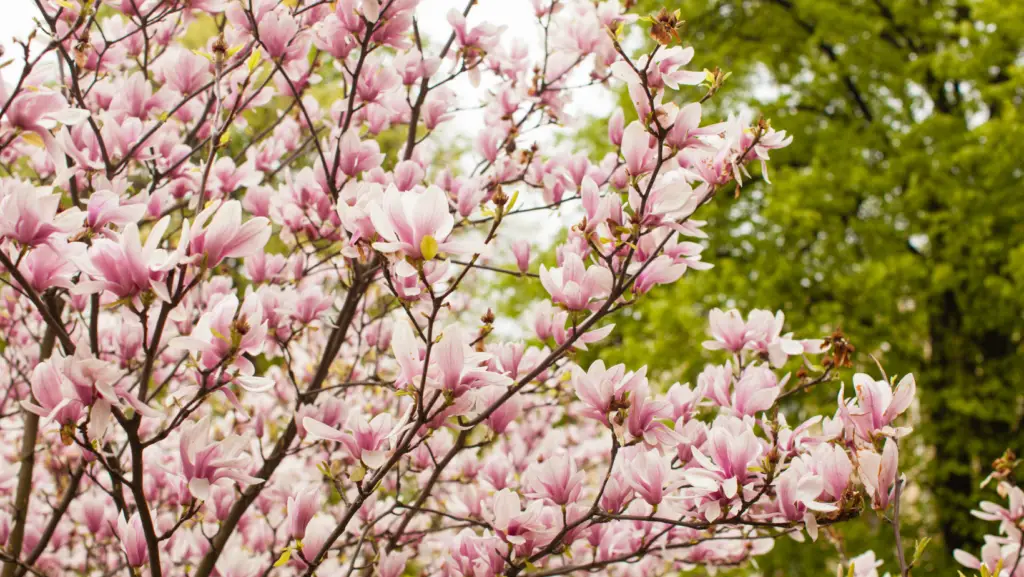
Deciduous magnolias are small trees, but their relatively slow growth allows them to be considered shrubs for many years. Their flowering is unparalleled and gives a Japanese touch to the smallest of gardens.
In this article, I have gathered for you all the information about the magnolia shrub, its main characteristics, and what you need to know to plant and grow it.
Characteristics of the magnolia plant
| Scientific name | Magnolia spp. |
| Family | Magnoliaceae |
| Origin | Japan |
| Foliage | Deciduous |
| Flowering | April-June |
| Rusticity | -15°C (-59°F) |
| Exposure | Sun or light shade |
| Soil | Rich, fresh and preferably acidic |
| USDA Plant Hardiness Zone: | 3 to 7 |
Magnolias measure from 2 to 5m in height, and 2m and more in width. Their large single tulip or star-shaped flowers are beautiful and have the great advantage of appearing before the leaves so that the abundant bloom is a delight.
How to grow a magnolia shrub

Magnolias are traditionally classified as heathland plants where they thrive, but their ability to adapt to the nature of the soil allows them to be grown in neutral soils, and even slightly chalky soils for star magnolias.
In all cases, their superficial and fleshy root system requires a shallow, rich and fresh soil, clayey without being compact, or sandy.
Each year after flowering, prune slightly by removing the ends of the branches that have flowered, 2 or 3 leaves below the faded flower.
How to grow a magnolia bush in a pot
Re-pot in a pot of 40 to 50 cm diameter and use a mixture of equal parts of potting soil enriched with seaweed manure, heather soil and slightly heavy garden soil.
Water regularly, especially in summer, to keep the soil just moist. At the end of winter, protect if necessary the flower buds which can be burned by the cold.
Where to plant a magnolia shrub
Isolated, or in association with some well-spaced out plants to emphasize them, and in a pot on the sheltered terraces.
Do not confuse these hybrids with Magnolia grandiflora, an evergreen tree that grows into a large majestic magnolia of 15 to 20 m high.
Our selection

The tulip-shaped flowers
- Magnolia x soulangeana grows first as a shrub for about 15 years, before giving a small tree with an upright spire and a spreading habit, 5 to 6m high. Its large flowers of 10cm are white inside and more or less purple outside. It has given several varieties such as ‘Lennei‘, pink inside and purple outside, ‘Alba Superba‘, pure white, or ‘Burgundy‘, deep pink.
- M. x lilliflora ‘Nigra‘, formerly called M. x soulangeana ‘Nigra‘, has a more compact habit. Its flowers are pink on the inside and dark red on the outside.
- M. x ‘Heaven Scent‘ is distinguished by its light pink flowers flamed with dark pink at the base of the petals.
- M. x ‘Susan‘ is a large shrub of 2 to 4 m, with a bushy and compact habit. Its flowers are purple-pink and numerous, even on small grafted plants of 2 or 3 years old.
The star-shaped flowers
- M. stellata is a small shrub of 2m. Early, it can bloom as early as March, giving large, simple, pure white star-shaped flowers. Its slow growth is appreciated for pot culture. ‘Water Lily‘ offers flowers with many petals; ‘Rosea‘ opens pink flowers, ‘Royal Star‘ is the most rustic of all (- 86°F and beyond).
- M. x loebneri ‘Léonard Messel‘, with soft pink flowers, is well adapted to limestone.
Conclusion
The magnolia shrub is a magnificent and timeless addition to any garden. With its stunning blooms, elegant leaves, and charming fragrance, it is no wonder why magnolias have been a favorite among gardeners for centuries. I only have one piece of advice to offer that will help you enjoy your magnolia shrub to the fullest: plant it in a location that showcases its beauty.

Hi!
I am the guy behind Theyardable.com. I grew up on a homestead and I am here to share the knowledge I have and things I learn while living in the countryside.
